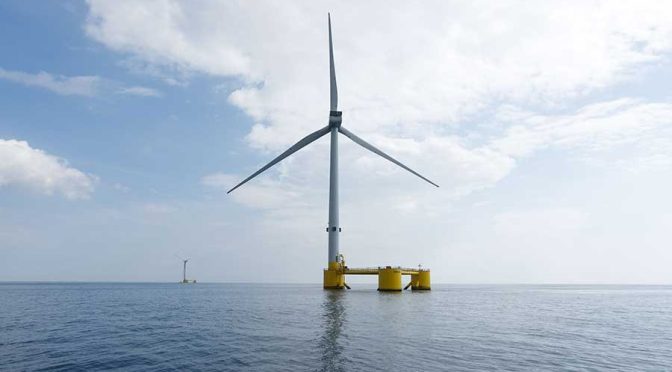RenewableUK, the Offshore Wind Industry Council, The Crown Estate and Crown Estate Scotland have published a detailed Industrial Growth Plan (IGP).
The plan is part of a wider effort to boost investment in the UK against the backdrop of growing global competition for clean energy technology.
It sets out a way to triple offshore wind manufacturing capacity over the next ten years, establishing the UK as a leader in the global market. The UK offshore wind industry currently employs 32,000 people and each large offshore wind farm adds between £2bn and £3bn to the economy.
Dan McGrail, chief executive of RenewableUK, called the IGP “the deepest dive ever into the offshore wind supply chain”.
He said: “The plan charts a clear course to make sure we take advantage of that huge economic opportunity and maximize our opportunities to manufacture those towers here, along with more blades, cables, foundations and a whole range of other products.”
RenewableUK expects employment to rise to more than 100,000 by 2030, and that investment in new offshore wind projects will create economic opportunity worth up to £92 billion for the UK by 2040.
An economic and labor transition
RenewableUK said the UK has “the world’s second largest pipeline of offshore wind projects at all stages of development at almost 100GW”, more than six times its current capacity.
Gus Jaspert, managing director of marine at the Crown Estate, said: “To truly take advantage of the shift to renewables, we must also see the UK’s energy transition as an economic and employment transition. “Our offshore wind industry is already a world leader, but as demand for wind technology increases further, both domestically and globally, the UK must be at the forefront.”
If offshore wind deployment accelerates in line with net zero emissions targets to 5-6GW a year, the measures set out in the IGP would support an additional 10,000 jobs a year and boost the UK economy by £ An additional 25 billion by 2035.
Protection against supply chain risks
According to the growth plan analysis, supply chain constraints on many of the key components required in offshore wind farms are impacting the global market. The IGP identifies new factories and manufacturing capabilities that the UK should develop to protect against supply chain risks and drive economic growth.
The plan identifies five key technology areas in which it is most important to invest for the UK. These include the design and manufacturing of offshore wind turbine blades and towers, foundations, cables and other key components and services for domestic and overseas projects.
The IGP also draws attention to the potential impact of incorporating automation and artificial intelligence technologies in new projects: driving technological innovation, accelerating implementation and further reducing environmental impacts.
As part of a focus on research and development on a potential new Advanced Technology Institute and a new National Innovation Centre, working in harmony with the UK Catapult network, the IGP sets out plans to expand testing facilities for emerging technologies such as new blade materials and floating offshore wind platform designs.
IGP: a shared vision for funders
The plan aims to provide a shared vision to enable industry, UK governments and other funders to better align their investments to boost green jobs and manufacturing in the UK. It plans to mobilize almost £3bn of finance across the country, with private finance largely involved.
Energy security secretary Claire Coutinho said: “The plans set out by industry today will work with our £1 billion Green Industries Growth Accelerator (GIGA) to make sure the UK can build out the supply chain – including the turbine blades and high-voltage cables that we will need to produce cheaper, cleaner, more secure energy.”
Proposals will be taken forward to set up an IGP Delivery Body – that should be established by the end of the year – which will set out the details for how to govern and deliver the IGP in a way that ensures the best use is made of funding provided by the industry, the government’s GIGA fund, The Crown Estate’s Supply Chain Accelerator, Scottish government funding and other sources.
Many of the UK’s competitors have introduced new incentives to attract investment in offshore wind projects and domestic manufacturing, hoping to replicate Britain’s success; the IGP sets a targeted approach that builds on our existing national capabilities.

